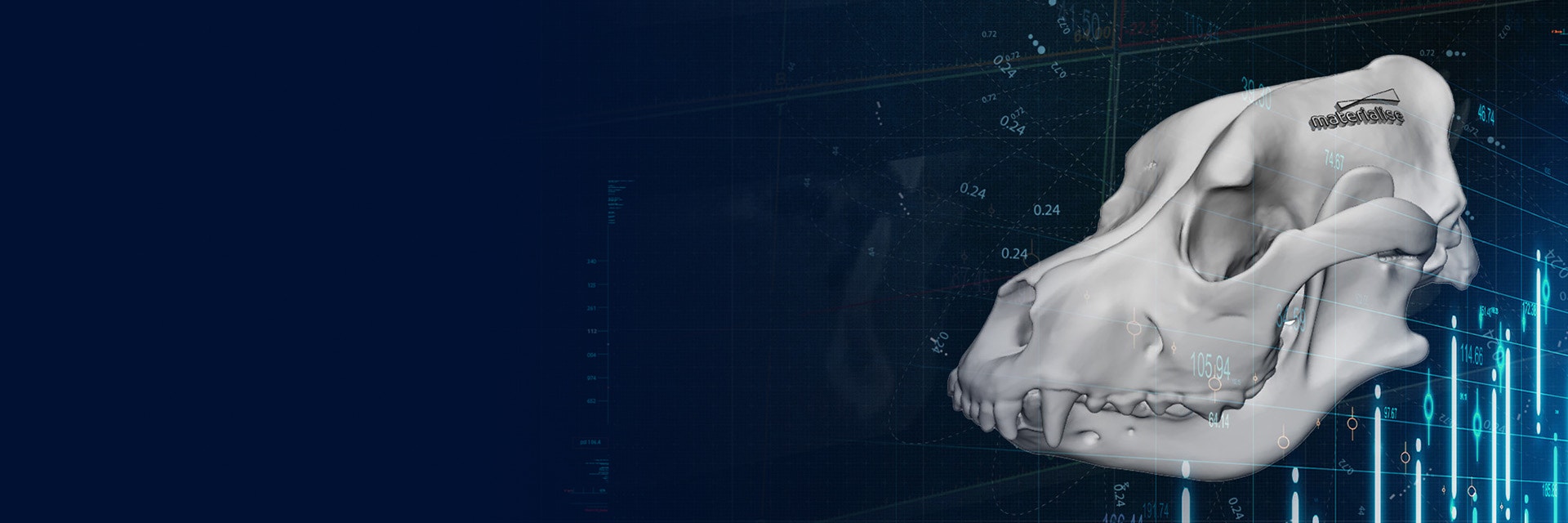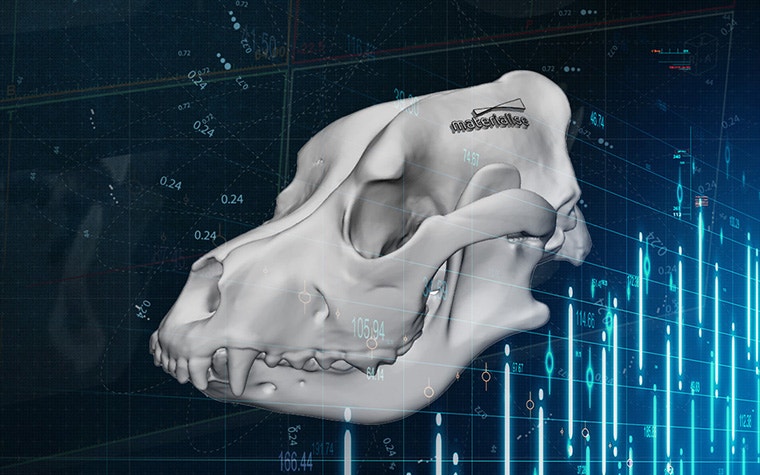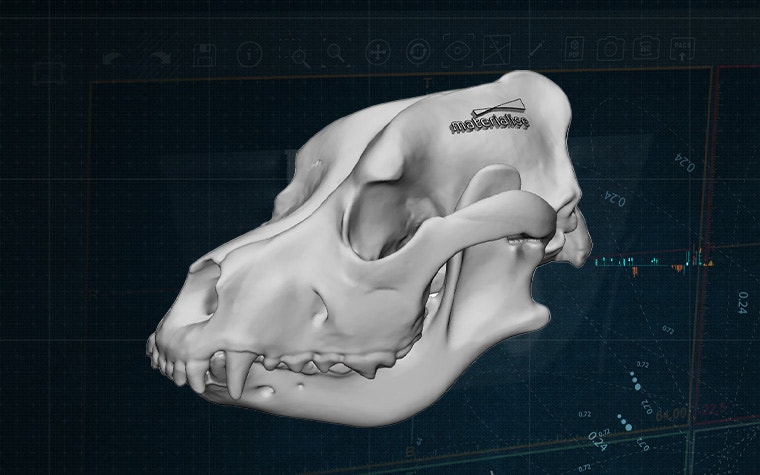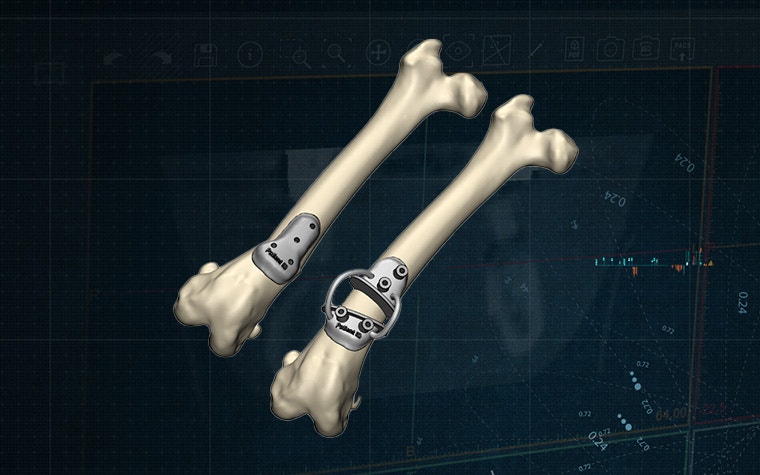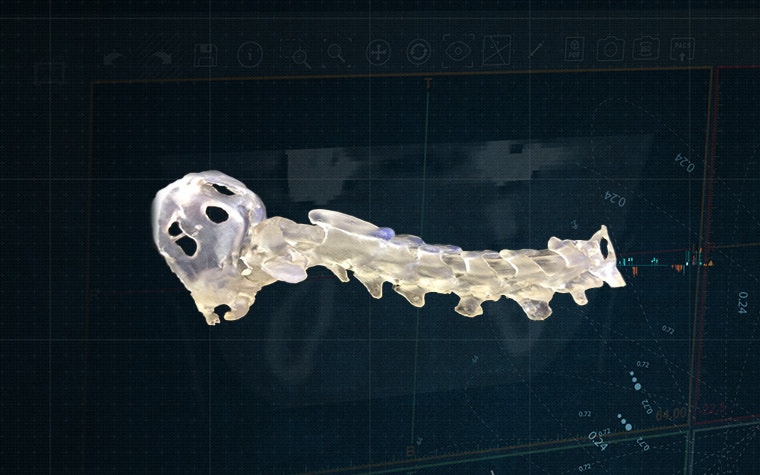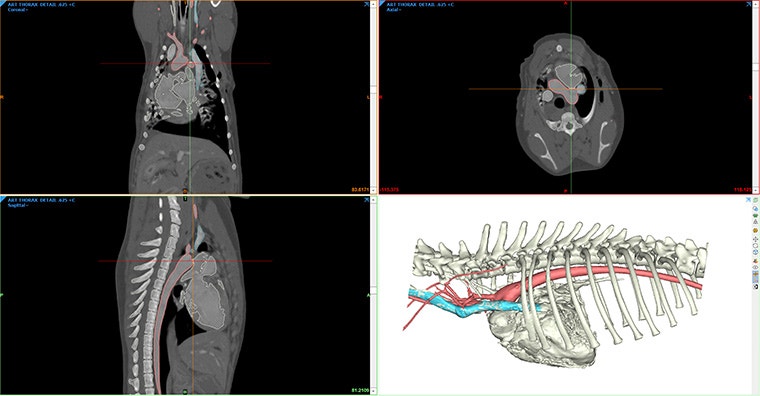Why do veterinarians choose Materialise Mimics for 3D surgical planning?
Precision in surgical planning
Create detailed, patient-specific 3D models from CT and MRI scans with Mimics. You'll visualize complex anatomical structures with unparalleled accuracy for more precise and effective surgical interventions.
Improved surgical outcomes
By reducing intraoperative guesswork, 3D visualization helps you execute procedures more efficiently, saving time in the operating room and improving outcomes.
Enhanced training and education
Access an invaluable teaching tool for veterinary residents that provides hands-on experience with virtual and 3D-printed models to deepen their understanding of anatomy and prepare them for real-world cases.
Better communication with clients
With virtual and physical 3D models, you can clearly explain surgical plans to clients to build trust and confidence in your proposed treatments.
Time savings
Realize clear surgical plans based on accurate virtual and 3D-printed models to reduce the time spent on intraoperative adjustments and focus your time on delivering efficient care.
Expanded treatment possibilities
With 3D modeling and planning, you can open new avenues for addressing conditions once considered inoperable. Explore innovative surgical solutions and push the boundaries of veterinary care.
Support for complex cases
From routine procedures to advanced surgeries like maxillofacial reconstructions, this versatile tool supports a wide range of veterinary applications.
Fostering innovation
Stay at the forefront of your field with advanced 3D visualization solutions that improve care and outcomes.
Applications
Clinical evidence
Integrating virtual surgical planning and 3D printing into the oromaxillofacial surgeon's toolkit will likely lead to decreased surgical times, improved patient outcomes and advanced surgeon skill set.
Virtual surgical planning and 3D printing: Methodology and applications in veterinary oromaxillofacial surgery (2022)
Virtual planning and fabrication of a 3D-printed patient-specific fracture reduction system is practical and facilitated acceptable, if not near-anatomic, fracture alignment during minimally invasive plate osteosynthesis.
Efficacy of virtual surgical planning and a three-dimensional-printed, patient-specific reduction system to facilitate alignment of diaphyseal tibial fractures stabilized by minimally invasive plate osteosynthesis in dogs: A prospective clinical study (2024)
The 3D-printed guides yielded drill tracts with small linear and angular errors from intended paths and 100% accuracy for placement within vertebral pedicles and bodies.
Accuracy of three-dimensionally printed animal-specific drill guides for implant placement in canine thoracic vertebrae: A cadaveric study (2020)
3D-printed craniectomy cutting guides, patient-specific PEEK cranial implants, and metronomic chemotherapy can lead to a successful long-term outcome in dogs with extensive skull MLO.
Case report: One-stage craniectomy and cranioplasty digital workflow for three-dimensional printed polyetheretherketone implant for an extensive skull multilobular osteochondosarcoma in a dog (2024)

Veterinary Dental Forum 2025
Curious about Mimics? Join us from September 25 – 27 in San Antonio to get more details. Fill in the form below to request information on the 3D Planning and Printing Advanced Track.
L-104780-01
